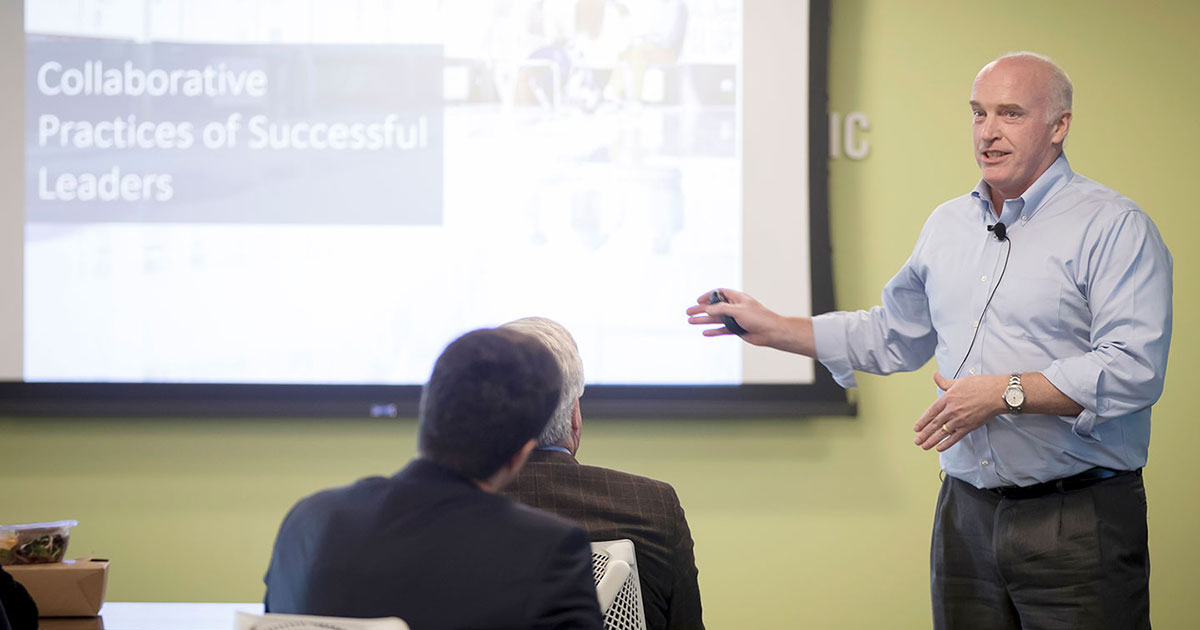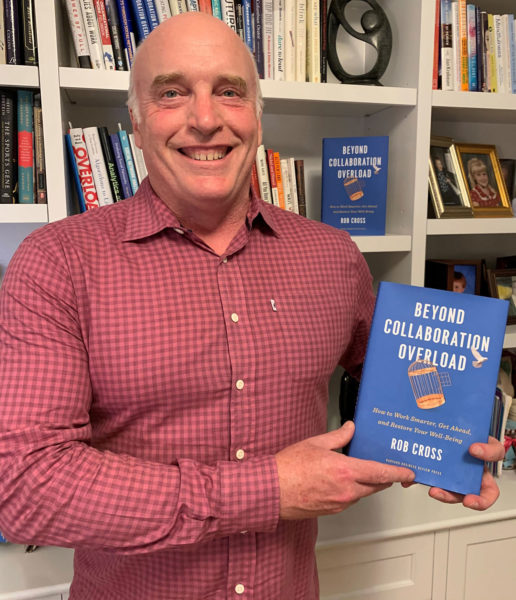Collaboration Overload? Try These 3 Tips for Working Smarter

Throughout the past year and a half, workers around the world have clamored for more time back.
That’s because over the course of the pandemic, employees have worked an average of five to eight more hours each week, due in part to a greater number of scheduled meetings and to-do lists that never seem to stop growing, Babson Professor Rob Cross previously told The Wall Street Journal.
In his new book, Beyond Collaboration Overload: How to Work Smarter, Get Ahead, and Restore Your Well-Being,Cross discusses how top performers have navigated these challenges and come out ahead. He recently sat down with Babson Thought & Action to share his most practical pieces of advice as the ways in which we work continue to evolve.
Value Time Together
As research director and a co-founder of Connected Commons, a consortium of leading organizations accelerating network research and practice, Cross studies patterns of connectivity and the different ways in which workers are collaborating.

One of the key ways people are employing this research is in planning return-to-office strategies post-pandemic. Cross uses network analysis to understand what employees really need in face-to-face interactions and what is just fine to leave as virtual.
“What we can see is that people really value face-to-face interactions that generate innovation, learning and growth, and a sense of energy and purpose in our work,” Cross says.
“No matter how we go back to work, there’s going to be less face-to-face time. People are going to have to treat that face-to-face time like gold almost, and use it for purposes like that. The problem, though, is most organizations are not preparing their leaders along these lines. If they fall back to conventional project meetings and other ways of working they have employed in the past, they will quickly lose people.”
Be Selective About Collaboration
During the pandemic, Cross and his team have observed, it’s been commonplace for workers to face a higher number of shorter daily meetings. In some situations, he says, a day of eight hour-long meetings has been replaced by 16 half-hour long meetings.
“That creates a tax on people, the interactions themselves are more intense and focused, you’re switching across things more rapidly and you end the day with a to-do list based on 16 meetings not just eight,” Cross said. “It’s not sustainable.”
The solution to this problem lies within the self-discipline of workers, who take small steps to structure their work in ways that shield them from collaborative overload.
During the pandemic, employees have spent an average of five to eight additional hours working each week, @RobCrossNetwork previously told @WSJ.
Here, he shares three practices you can implement today to get that much coveted time back. pic.twitter.com/GLAj2FYS9t
— Babson College (@babson) October 15, 2021
“People that do better are managing to a different rhythm of work. For some people, that’s doing email in the morning or doing creative work early. Others start with creative work and do email in 30-minute blocks a couple of times through the day,” Cross says.
“The more successful people are buying back about 18 to 24 percent of their time, based on the ways that they’re interacting. Where I see people getting in trouble is when they try to be over-responsive.”
Meet Employees Where They Are Mentally
Through studying leaders in recent months, Cross has found that many have rejoiced in the additional time back that remote work has offered.
With many companies planning or in the midst of return strategies, and with The Great Resignation under way, how managers re-engage these people, Cross says, will be imperative.
“These highly connected people—often 3-5% of your employees account for 20-35% of the value added collaborations—are critical. But, they tend to also be the ones who have grown to value the time from not commuting,” he says. “You’re at risk of losing them, and you (potentially) disrupt all the connections that were relying on them to get work done.”
Posted in Insights




